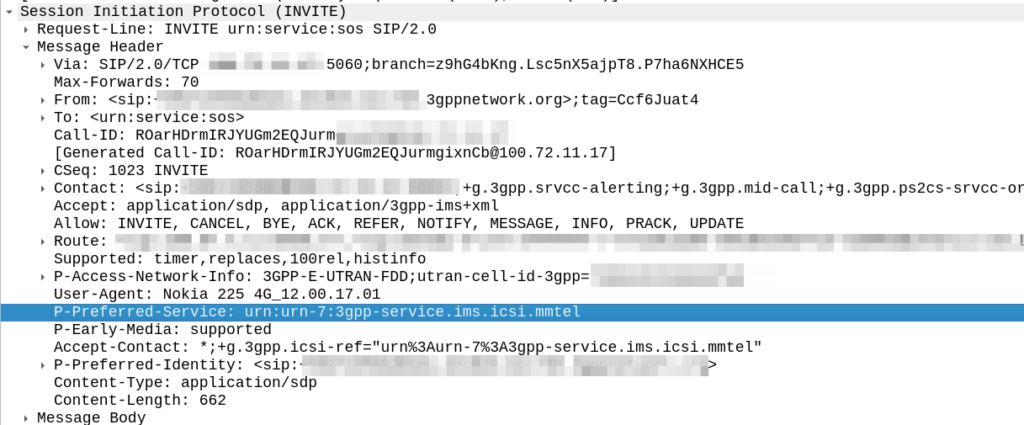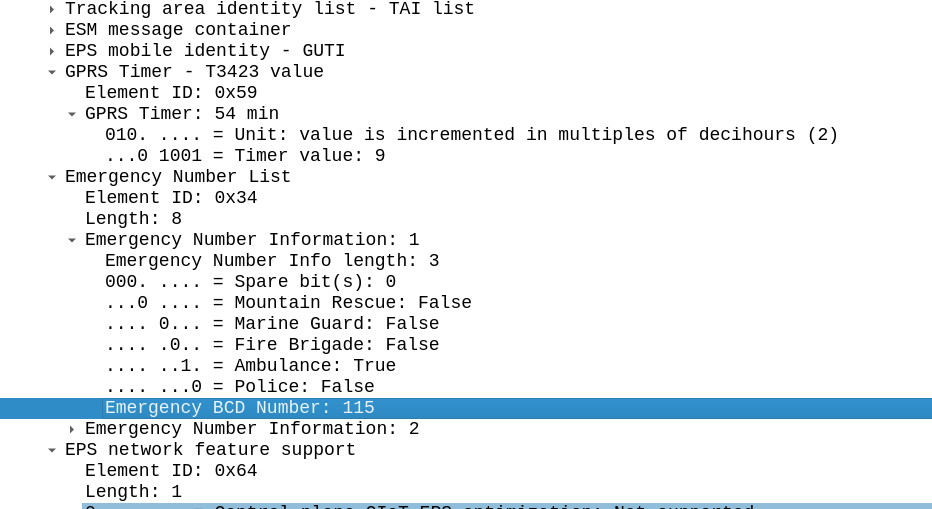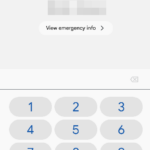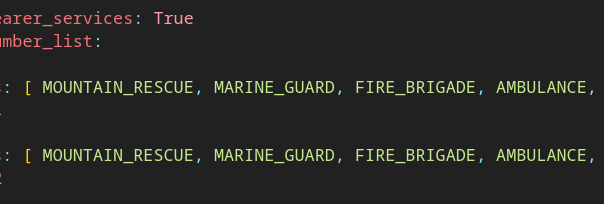In my last post talking about the Emergency Calling Codes, I had a few comments asking about what about in roaming scenarios?
For example, an American visiting the UK, would have 911 on the Emergency Calling Codes list on their SIM card, but in the UK they dial 999 to reach emergency services.
There’s two angles to this, the first is if a roamer dials the emergency calling code of their home country, the other is if they dial the emergency calling code of the country they are in.
Let’s look at the first scenario, where the roamer dials the emergency calling code of their home country.
If our American in the UK abroad dials 911, that number is on the ECC list on the SIM, it’s still flagged as an emergency call, and just goes out with the standard urn:service:sos URN – The network never sees 911 or 999, just that it’s an SOS call that goes to the PSAP.
In this scenario, the fact the dialled number is not passed to the network is actually a positive, we get the intent that the user wants to reach emergency services, and route based on this.

But what if our American friend in need dials 999?
That’s the correct number for the end user to dial in the UK after all, but if that’s not in their ECC list on the SIM / device, it’d go through as a regular call right?
If the call does not get flagged as an emergency call on the UE this has its own set of complications and considerations:
S8-Home Routing for VoLTE means that as the UE doesn’t know this is an emergency call, the call will get routed back to the home network. This means the call doesn’t go to the E-CSCF in the visited network, and would probably just get a message saying the number they’ve dialed is unavailable, this would be exactly as if they dialed 999 at home in the US.
But we have a fix for this!
On each MME we can set a list of emergency numbers, which would allow our Britt’s phone to know on this network, what the emergency calling codes are, and route the 999 call to the local PSAP, rather than home routing it.

This information is jammed into the Emergency Number List IE in the NAS Attach Accept body.

This means our American visitor in the UK, would know about 999 from the ECC list configured in the roaming operator’s MME.
The purpose of this information element is to encode emergency number(s) for use within the country where the IE is received.
3GPP TS 24.008: 10.5.3.13 – Emergency Number List
Where this becomes more problematic is unauthenticated emergency calling.
For example, a our American visiting the UK, that is not roaming dials 999.
We’ll assume the UK and US operator don’t have a VoLTE roaming agreement because they’ve been kicking the can down the road when it comes to VoLTE roaming… This is super common scenario – last numbers I saw on this were last year with ~50 bilateral VoLTE agreements in place worldwide.
Because the phone is not attached to a local MME, the handset does not know that 999 is an emergency calling code (because it’s not on the SIM), after all, the only way it can get the Emergency Number List is from an MME, and not having been attached to an MME, means the phone does not have the ECC list for the country, so the the handset does not begin the emergency attach procedure to make the call.
Common sense prevails here, on the majority of phones and the majority of SIM profiles, codes like 112 or 911 are treated as emergency calls, but more obscure numbers, such as dialing 999 in the UK or 10111 for South African Police on a handset with US firmware, are not guaranteed to work. Generally dialing the Emergency Calling code in the home network would get you through to some emergency services (although as we talked about in the last post, this might get you routed to the wrong agency in countries where each agency has their own number).
A better way forward?
These days I don’t dial much (apart from if I’m making adjustments on the Step-by-Step exchange), when I call people I do it from contacts, hyperlinks, etc.

There is mountains of research to suggest that asking people to remember codes and phone numbers, is a struggle. A tourist who finds themselves in Tunisia in need of assistance, is unlikely to remember that it’s 190 for an Ambulance, and 198 for Fire.
Perhaps the ECC list on a phone should populate a page of icons from the emergency page on the phone, with the universal icon for each agency, that sends to the URN for that service type?
Countries with a single PSAP could have the URNs for each service type routed to the same place, while countries with seperated PSAPs for each service type, can route accordingly.
Likewise if a country does have a centralised PSAP for all call types, knowing the type that is selected would be useful, for example if the user has pressed fire and is not responsive when the call is answered, the best unit to dispatch would probably be a fire engine.

Hey nick , nicely put . We hit these challenges years back and most of the time , the gap is fixed not by spec rather by simple workarounds. For both scenarios we have network level workaround at IMS / PCscsf and on top of which dynamic ECC is a thing pushed forward . You will hear the gaps getting closed
Interesting post! and late feedback…